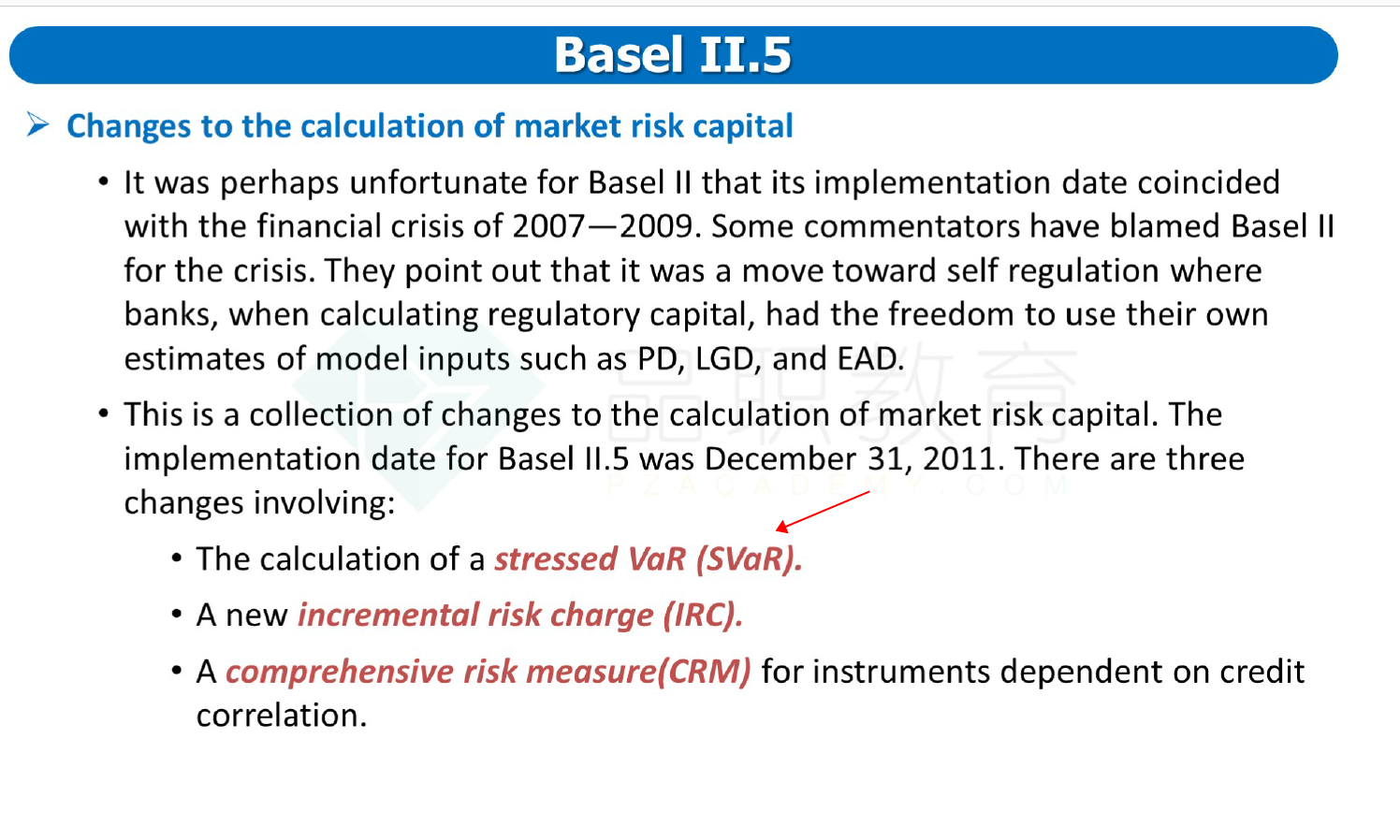NO.PZ2022071105000003
问题如下:
A regulatory analyst at a large multinational bank is examining regulatory requirements the bank must comply
with under the Basel Committee’s FRTB guidelines. The analyst explores how the FRTB guidelines evolved from
the Basel I and Basel II.5 frameworks as well as the instructions for applying the guidelines. Which of the
following is correct regarding the FRTB?
选项:
A.While Basel I and Basel II.5 allowed market risk to be calculated at the trading desk level, FRTB requires
that market risk be calculated on a firm-wide basis.
B.While Basel I and Basel II.5 emphasized the use of a standardized approach to calculating market risk, FRTB
encourages each bank to develop and rely on an internal models approach.
C.FRTB standardizes the liquidity horizon used for all risk factors in the market risk capital calculation as 10
days, rather than the different horizons used in Basel I and Basel II.5.
D.FRTB requires that the stressed ES measure be used in determining market risk capital, rather than the VaR
and stressed VaR measures that were used in Basel I and Basel II.5, respectively.
解释:
中文解析:
D是正确的。巴塞尔委员会已经从巴塞尔协议I和II里面的VaR和压力测试VaR,转变为使用FRTB里面的压力测试ES。
A是不正确的。FRTB允许前台交易环节计算市场风险。
B是不正确的。FRTB是巴塞尔委员会努力减少对内部模型方法的依赖性的措施。根据FRTB的规定,所有银行都必须使用标准化方法来计算市场风险,即使它们已经被批准使用内部模型方法。
C是不正确的。FRTB引入了5个能更匹配不同的风险因子的流动性范围,比之前的巴塞尔I和II里面使用的10天范围的匹配性更好。
D is correct. The Basel committee has moved from the VaR and stressed VaR measures
used in Basel I and Basel II.5 to the stressed ES measure used in FRTB.
A is incorrect. The reasoning is reversed. FRTB allows market risk to be calculated at the
trading desk level.
B is incorrect. The FRTB is a culmination of Basel committee efforts to place less reliance
on internal models approach. Under FRTB, all banks must calculate market risk capital
using a standardized approach, even if they have been approved to use an internal models
approach.
C is incorrect. The FRTB introduces 5 different liquidity horizons that are better matched
to the liquidity horizons of different risk factors than the earlier 10-day horizons used in
Basel I and Basel II.5.
如题




